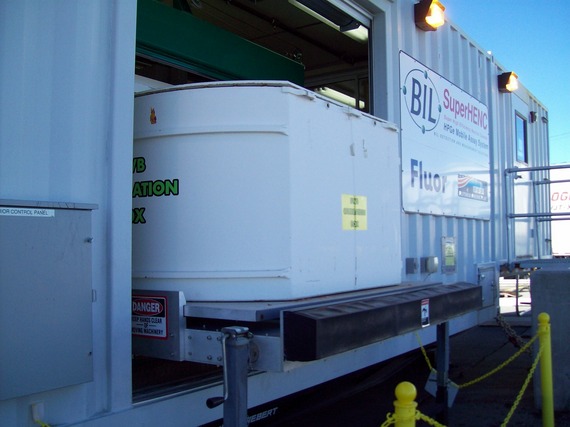
DOE received approval to use new equipment called a super high efficiency neutron counter at the Los Alamos National Laboratory for examining transuranic waste.
DOE to Use More Efficient Waste Screening Equipment
LOS ALAMOS, N.M. – The U.S. Environmental Protection Agency recently approved DOE’s request to use new equipment at the Los Alamos National Laboratory (LANL) for examining transuranic (TRU) waste.
EM uses x-ray equipment similar to airport luggage screeners to analyze the contents of containers of waste for disposal at the Waste Isolation Pilot Plant (WIPP).
The new equipment — called a super high efficiency neutron counter (SuperHENC) — ensures prohibited items such as aerosol containers are not in waste shipped to WIPP. These items have the potential to cause a fire or explosion from pressurized volatile organic compounds.
SuperHENC has high fidelity to x-ray contact-handled TRU (CH-TRU) waste boxes. While the Transportation Security Administration screens for prohibited items on planes, EM looks for items not allowed due to the potential hazards — physical, chemical, and nuclear characteristics — primarily associated with transporting waste to WIPP.
Prior to having SuperHENC, workers at LANL’s Central Characterization Project opened packages and sorted items by hand to ensure there was nothing prohibited. This work helps DOE sites properly characterize and certify TRU waste for disposal at WIPP.
With SuperHENC, fewer containers will be opened for sorting, which reduces potential worker exposure and increases efficiency. Improved TRU waste characterization supports EM’s goal to disposition 90 percent of legacy TRU waste by the end of 2015.
CH-TRU waste has a surface dose rate of less than 200 millirem per hour and can be handled without lead shielding. In fiscal year 2011, DOE shipped 171 CH-TRU waste shipments from LANL to WIPP consisting of 522 cubic meters of CH-TRU waste. One cubic meter is equivalent to the content of a box 40 inches high by 40 inches wide by 40 inches deep.
WIPP is a DOE facility designed to safely isolate defense-related TRU waste from people and the environment. Waste temporarily stored at sites around the country is shipped to WIPP and permanently disposed in rooms mined out of an ancient salt formation 2,150 feet below the surface. WIPP began waste disposal operations in 1999.
|